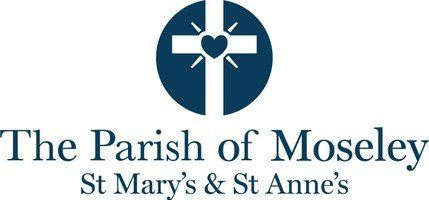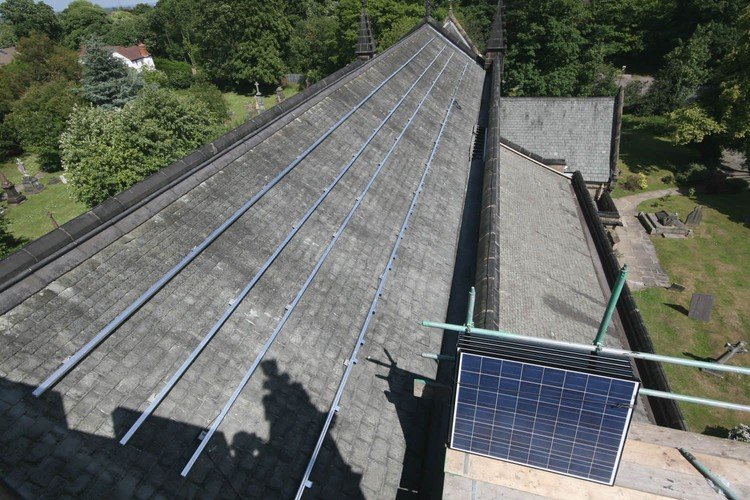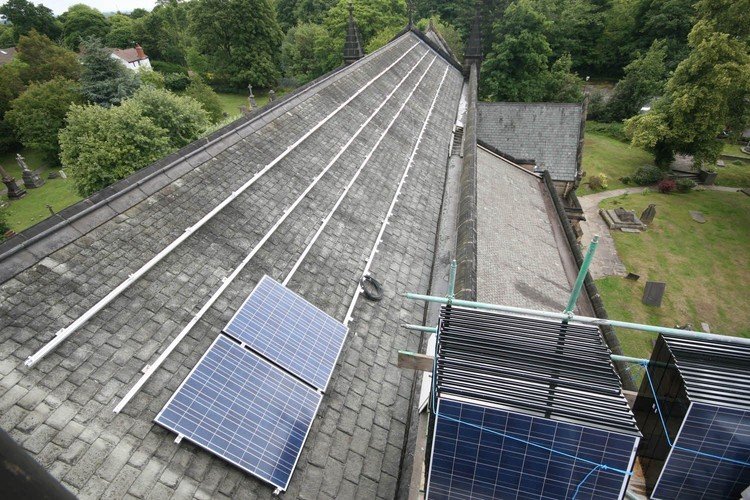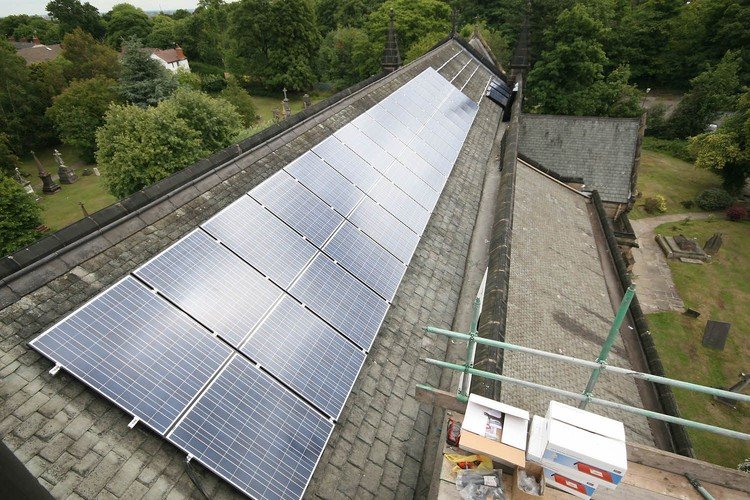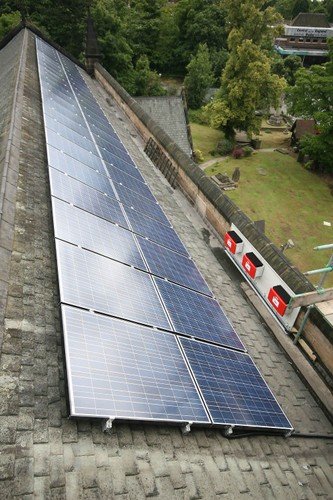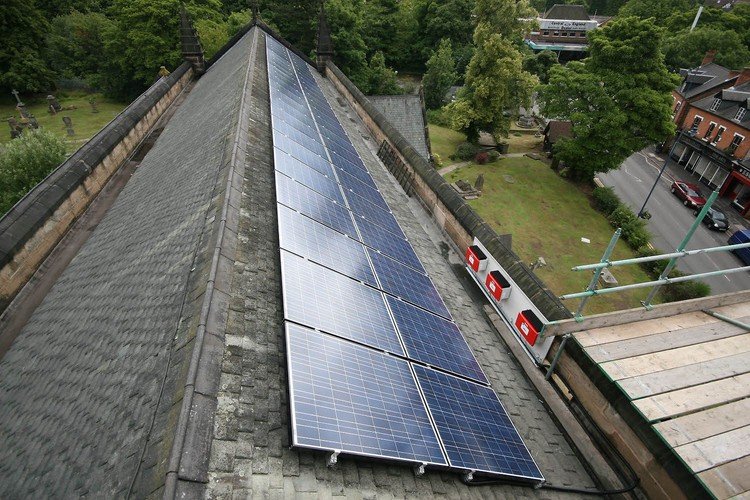St Mary's Solar Panels Project
Motivation
Members of St Mary’s PCC began to consider how to contribute to CO2 reduction in 2008. Photovoltaic panels were an obvious choice as the church has a long south-facing roof, in common with all Christian churches. The panels have the merit of generating electricity all the time the sun is shining, whereas the church is used mainly at weekends. The unused electricity is fed into the grid, contributing to renewable energy production, and producing an income from the feed-in tariff that helps with the upkeep of the church. The roof of the nave is ideal as it is un-shaded, and largely hidden by a parapet wall when viewed from the street, thus reducing the visual impact of the panels on the character of the building.
Approval Process
Planning permission was sought in 2009, when St Mary’s also joined Sustainable Moseley (SusMo) and became part of a British Gas Green Streets competition entry that won the award for the West Midlands. There was tremendous support from churchgoers and local residents, including the Moseley Society, Moseley Forum, local MPs and Councillors, in which SusMo played an important role. This helped to overcome objections from City planners and the Diocesan Advisory Committee, which has members representing English Heritage and the Victorian Society, with approval finally being given by the Planning Inspectorate in September 2010, and the Diocesan Chancellor in March 2011. The panels started generating on 13th July.
Project details
There are 48 1.3x1.0 m2 panels in two rows of 24 with a peak power of 9kW, producing about 7000 kWh of electricity per year. There are three inverters that convert DC to AC, also mounted on the roof, with cables running inside the bell tower down to a basement room where connections to the grid are made. There is a display meter inside the church that shows the current power level and the energy generated to date with the mass of CO2 saved. The income from the feed-in tariff will be about £3K per annum.
Funding
The British Gas Green Streets award contributed £34K to the total cost of £50K, with the remainder coming from a church fund, repaid from the income.
